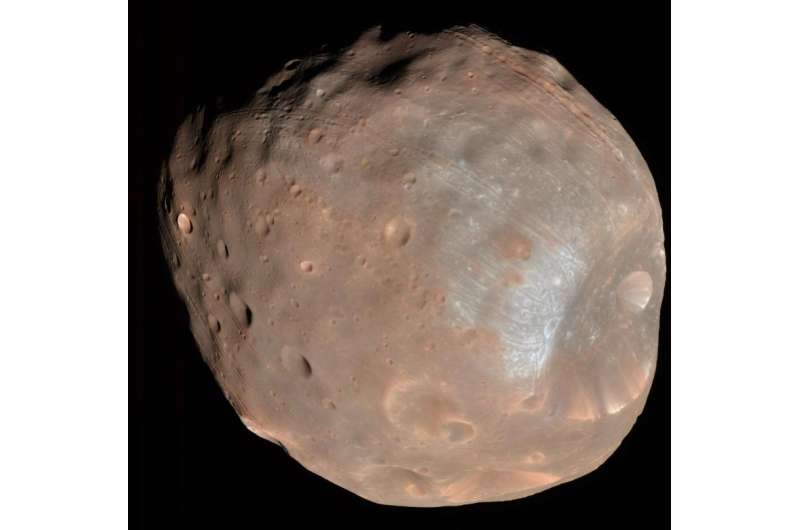That work will be part of a later joint effort between NASA and the ESA to collect samples from Mars and bring them back to Earth. Also scheduled is Japan's Martian Moons eXploration (MMX) project, which will involve sending probes to both of Mars' moons and bringing back samples before the decade is out.
Hyodo and Usui note that both of Mars' moons—Phobos and Deimos—are smaller than Earth's moon. They are also much closer to the planet. The researchers note that probes sent to study the surface of Mars will only be able to test a very small part of its surface—imagine, they suggest, a probe touching down in the middle of the Sahara Desert; it would find signs of life, no doubt, but would find only a very small fraction of it. They suggest that a probe on one of Mars' moons might have more luck. They note that prior research has suggested that Mars was once wet. Prior research has also shown that Mars has been struck by many asteroids over the course of millions of years. Some of the larger strikes have led to bits of the surface being blasted into space—one such bit has even been found here on Earth. They suggest that many bits of the planet have been blasted into space, some of which have no doubt made their way to the surface of one or both of its moons. Such bits, they note, would likely represent a large portion of the Martian surface. Because both moons have very nearly sterile environments, material containing proof of life may still be there.
© 2021 Science X Network



